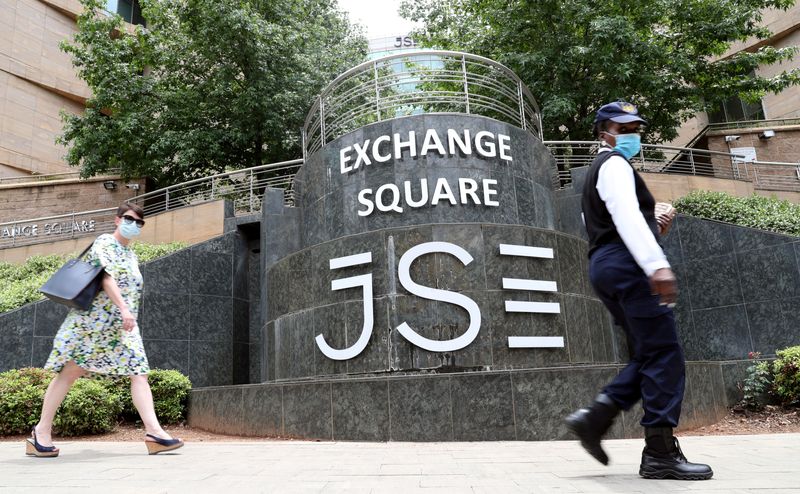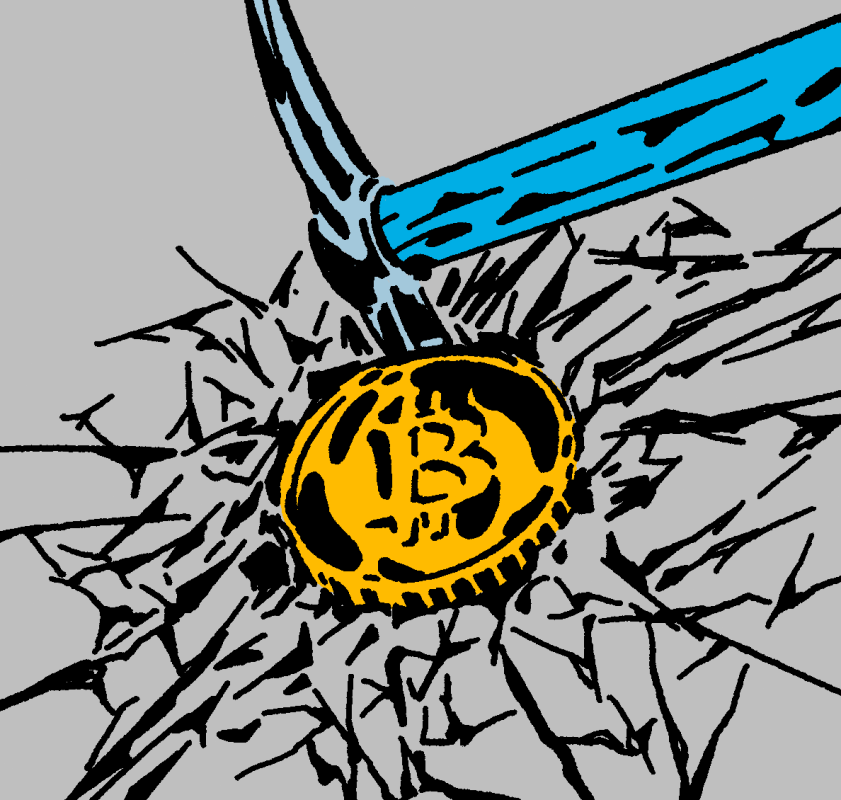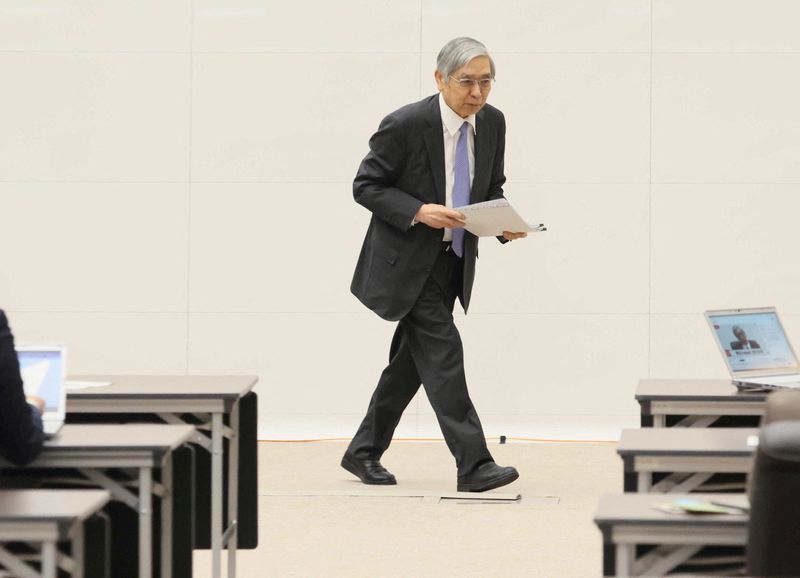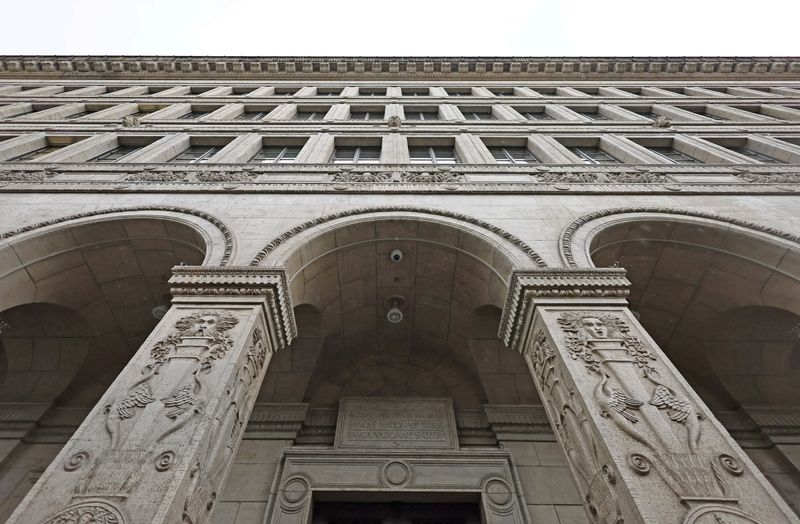Month: April 2024
Stay long US dollars this week – Macquarie
Post Content
Tether Grants BTCPay Server $100,000 To Continue Working On Enabling Anyone To Accept Bitcoin
Today, stablecoin issuer Tether announced a significant award of $100,000 to the BTCPay Server Foundation that underscores Tether’s strong backing for the Free and Open Source Software (FOSS) movement, emphasizing its commitment to advancing digital payment solutions, the company stated.
JUST IN: Tether donates $100,000 to BTCPay Server so it can continue working on enabling anyone to accept #Bitcoin 💥
— Bitcoin Magazine (@BitcoinMagazine) April 2, 2024
“Our grant to the BTCPay Server Foundation is a testament of Tether’s commitment to the open-source community and our belief in the transformative power of technology,” stated Tether CEOCPaolo Ardoino. “By supporting the BTCPay Server Foundation, we are investing in the future of digital payments and empowering developers to create innovative solutions that meet the evolving needs of users around the globe.”
The BTCPay Server Foundation is renowned for its open-source payment processor software, utilized and customized by numerous merchants and businesses globally to accept Bitcoin and USDt payments on Liquid. Tether’s grant to the foundation reflects its acknowledgment of FOSS’s pivotal role in driving technological progress and democratizing access to cutting-edge technologies.
“I’m thankful to Tether for recognizing BTCPay Server’s significance as a Bitcoin FOSS project and for its generous grant,” said Bitcoin Core Contributor and founding member of BTCPay Server, R0ckstar Dev. “This contribution greatly empowers us to concentrate on our mission: enabling anyone to accept Bitcoin, unhindered by geographic, political, or financial barriers.”
Tether stated that his partnership signifies yet another achievement in the company’s efforts to bolster and enhance the FOSS community, and it showcases its strategic vision and dedication to fostering a digital future that is more “inclusive and equitable.”
1 Billion Bitcoin P2P Traders: NoOnes Sets Sights on Nigeria and Global South
I recently spoke with Ray Youssef, CEO of NoOnes, a peer-to-peer (P2P) bitcoin trading platform with numerous other functionalities, about how NoOnes is empowering its users, what it’s doing in response to the Nigerian government’s crackdown on Binance P2P and why P2P marketplaces play a crucial role in fulfilling the promise of bitcoin as a medium of exchange.
Youssef and the global team at NoOnes are on a mission to end financial apartheid and to unite the financially disenfranchised around the world. In the process, they’re taking on the old financial guard, driven by the belief that when people can trade freely with one another using bitcoin, the oppressive powers that be will lose their leverage over those living in developing economies.
A transcript of our conversation, lightly edited for length and clarity, follows below.
Frank Corva: What is the primary mission of NoOnes?
Ray Youssef: It’s the world’s first peer-to-peer distributed nation. I see myself as a chief advocate, not just CEO — someone that is representing the people. We want to onboard a billion citizens in the next six years.
By citizens, I mean engaged customers. They’re not just using it once every two weeks. They have to be deeply engaged for this to be victorious. That means a billion daily engaged people. It’s an amazing number when you consider Binance has 120 million users and about 2-3% of them are probably monthly active. We’re trying to get a hundred times that.
Corva: How many people are currently using it?
Youssef: We have about 400,000 active users, which is pretty amazing. My old company had like a quarter million active [users]. The goal here is not just to get empty signups. The goal here is to make people active.
Corva: You’ve talked about how apps like NoOnes and Bitcoin can help end “financial apartheid.” Could you define this term?
Youssef: Financial apartheid is the most evil form of apartheid. It’s invisible chains that have basically kept the vast majority of the world poor for over a hundred years, and people aren’t even aware [of it]. It manifests in so many different ways.
Broken overregulation [is one form of it]. Africa is the most overregulated region of the world. M-Pesa is the top mobile wallet in Kenya. 98.8% of Kenyans have an M-Pesa wallet. M-Pesa is so big it’s expanded beyond Kenya to Ghana, South African and other African countries, but you still can’t send money from an M-Pesa wallet in Kenya to an M-Pesa wallet in Ghana or South Africa.
You are trapped in the economy where your passport was issued. You can’t access liquidity in other countries, and they can’t access liquidity in your country.
The problem gets even worse when you consider commerce between companies. Pan-European trade is at 69%. In Asia, I think it’s 59%. Latin America drops down to 30%. And Africa, officially it’s at 13%.
But guess what? The real number is less than 1%. Because in that 13%, they count all these American and Western corporations that just have local names. Intracontinental African trade is at less than 1%. If that doesn’t scream financial apartheid, what does?
Corva: Speaking of Africa, let’s discuss what’s happening in Nigeria. The government took two Binance executives hostage. In response, Binance has stopped supporting the Naira and has shut down its P2P trading platform in Nigeria. NoOnes is currently enabling Binance P2P traders to transfer their P2P trading profiles from Binance to NoOnes. How is this going?
Youssef: Traders are very happy to have their feedback imported over. It’s very important. Reputation is huge in this business, especially if you’re an OTC trader. [So,] we made a special landing page for all the peer-to-peer refugees.
They’re very happy to come over and be able to talk to the CEO directly in a Telegram and WhatsApp channel. That goes a long way.
Binance is being torn apart by the US government right now. Why did they go for this guy (Changpeng Zhao (CZ), Binance’s former CEO) so hard? Were they angry he was front-running his own users? No. They didn’t care about that at all.
What they really cared about is that CZ and Binance allowed all of us plebs — all of us peasants out there — to have financial access through peer-to-peer trading. The fact that there’s 120 million people on the same internal money transmission network and that CZ has all these off ramps to local money all over the world set them off.
Remember the guy they came after before CZ? Ross.
Corva: Ross Ulbricht?
Youssef: Yes, sir. Peer-to-peer is the enemy, and it always has been. They’ve had Ross in jail for over 11 years. He just put up a website like Amazon or eBay where anyone could trade anyone with anything.
[Sure,] some people sold some weed on there. For that, they made up this story about [his involvement in a murder conspiracy]. This is all garbage. This is a sweet, innocent kid. And they put him in jail for two life sentences.
Corva: And Sam Bankman-Fried only got 25 years.
Youssef: The only reason Sam Bankman-Fried got any time at all was because some rich people lost some money. This is the only reason that Madoff got any time at all. too. If he was robbing poor people, no one would give a damn. But Ross Ulbricht, man, they hit him with everything because they could. They wanted to send a message: “Hey, if you try to make global free marketplaces — real commerce — happen, we’re going to destroy you. You don’t touch that.”
And guess what? They’ve done that to bitcoin, [too]. They said, “Hey, we’ll let bitcoin exist as a store of value. If you get in good with us, we’re going to give you an ETF ticker. We’re going to get our pension funds in there. We’re going to let the price go up high. You’ll be just a little bit better off than everyone else. But you gotta give up this whole medium of exchange [thing].”
We gave up literally the best thing in the world, a free system of real commerce for a store of value for just another get rich quick pump and dump. It’s actually beginning to dawn on all of us: Oh, my goodness. Roger Ver was right.
Corva: I was actually just watching an interview with him on The Bitcoin Takeover. He made some interesting points that are in line with what you’re saying.
Youssef: I mean, yeah, I was pissing all over Roger with all the other clowns before, too, but the dude is right. We have lost the ethos. We have lost the foundational base for what we’re doing. And should they actually manage to keep bitcoin out of the picture as this medium of exchange and just keep it as a store of value, eventually we’ll lose everything.
If it wasn’t for what’s happening in the Global South, it’s empty. And quite frankly, the Global South has moved over mostly to USDT on Tron. The only nation still [using] bitcoin primarily for a medium exchange is Nigeria. But the truth is, USDT on Tron is way cheaper. It doesn’t have volatility. It makes a lot more sense. So, how are we going to compete with that?
Corva: That’s a good question. Going back to Nigeria for a moment. NoOnes has team members on the ground who are promoting the platform in the wake of Binance P2P shutting down. Do you ever worry about their safety? How do you deal with the fact that they could easily be targeted?
Youssef: Number one, I’d try to get them out of the country. And if we can’t do that, then I’d ask them to keep as low of a profile as possible. We also keep something in the bank to represent them legally. I don’t want anyone to go to jail for anything I do. I’m not going to play with other people’s freedom or safety.
But throughout this whole process, everyone’s been pooping all over the Nigerian government. They’re like, “These people are dumb,” and that’s not helpful. There are some very smart people in the Nigerian government that know exactly what’s going on, but they can’t tell their own people exactly what’s going on because their own people wouldn’t be able to handle it or help them.
Every time I talk about this on Bloomberg or CNN Africa, I say, “The governments are not the problem. There is external pressure being applied to them that we’re not aware of.” And this is always the case in every one of these situations, whether it’s Zimbabwe or Venezuela.
I invite the government to talk anytime. Peer-to-peer is not a problem but the solution to actually correcting Nigeria’s capital control imbalance. If you go to peer-to-peer traders and say, “We need you to help us get more American dollars into the government here to stabilize the price of the Naira, they’re like, ‘Okay, [let’s] do it for Nigeria.’”
[However,] they’re not going to lose money doing it. They want to make some money doing it. But if they have the choice between doing the right thing to help everyone across a long-term timeline and making a little bit less profit, they’ll take that. Believe me, these people are not stupid. They know what’s good for the country is good for them, and that should be leveraged.
Corva: Speaking of people not being stupid, the team at NoOnes focuses heavily on education. How challenging is educating people on the ground?
Youssef: I posted a video on my Twitter of one of our workshops. There were over a thousand people there. That’s how much hunger there is for this.
Seriously, Education is THE way and #noOnes is absolutely blowing up now !#Bitcoin to the first billion, self custody and p2p. pic.twitter.com/lEGaNlXGSE
— Ray Youssef (@raycivkit) March 27, 2024
Everyone needs bullish education. What I mean by bullish education is not the one, two, threes, or even how the blockchain works. No one really cares. It’s how to make money. People want to change their lives.
You can move money around the world to leverage arbitrage. You can start real simple and put up an offer to buy bitcoin cheap on NoOnes and then take it and sell it on another exchange, a local exchange, whether you’re in South Africa or Malawi or wherever at 10% plus. That’s what some people are doing.
One guy I just talked to last week was making $2,000 a month — just buying bitcoin cheaply and selling it for 9-10% of what he bought it for. He [told me], “This is how I’m paying my way through college.” He spends just five hours a week doing these trades.
There’s another dude in South Africa, and he identified a problem. Nigerian workers want to send money back home to mama. They can’t do it because they don’t have a South African bank account. So he tells them, “Deposit your cash into my South African bank account.” He just takes that cash, buys bitcoin with it, sells that Bitcoin to someone in Nigeria on the NoOnes marketplace and says, “Send a bank transfer to this guy’s mother’s bank account.”
He did two peer-to-peer transactions and turned [South African] Rand into a Nigerian bank transfer, and the people on the ground are super happy they didn’t have to do it themselves. They just put money in the bank, gave him his mom’s bank account number. He did all the work. He’s banking and making profit. He started his own remittance corridor. He’s basically Western Union for the very specific corridor of South Africa to Nigeria.
Corva: These are incredible stories. When I think about NoOnes, I think about people around the world gaining access to bitcoin, not necessarily becoming entrepreneurs using the platform. It’s great to hear that P2P bitcoin trading enables this.
Youssef: Absolutely. We are in the middle right now of the peer-to-peer revolution. It started with the internet. We got all these mobile devices and all these startups that disrupted everything except finance. Then, we got peer-to-peer electronic cash. Now, we’re fighting for the soul of it as a [medium] of exchange.
Peer-to-peer marketplaces are the last step. That’s what they put Ross Ulbricht in jail for. That’s what they put CZ in cuffs for. They don’t want someone actually finishing it, completing the peer-to-peer revolution.
We’re going to the mom and pops, the farmers markets, but if the money isn’t peer-to-peer, none of it will stick. Once we’ve gone peer-to-peer, what power do they have?
Humanity is officially one once we tie that ribbon around the peer-to-peer revolution.
South African rand firms as dollar slips on US jobs data
Post Content
BitVM 2: Opening Up The Playing Field
Last October Robin Linus from Zerosync dropped a bit of a bomb in the form of BitVM. One of the longest running criticisms of Bitcoin is that it is not possible to make arbitrary programs to control how money is spent or locked. Bitcoin only has a very limited amount of programmability in its scripting language, and the primitives available are extremely constrained. You can check a signature, you can add a timelock to something, you can manipulate data in a few simple ways, but that’s it.
You can program a Bitcoin UTXO to require a signature check, a timelock verification, etc. But you cannot program it to unlock based on any arbitrary conditions. Robin’s insight with BitVM was that one single primitive in the field of computing could be enforced in Bitcoin script: a NAND gate, one of the basic primitives of computing at the physical/electrical level. Every computation that is possible can be constructed out of NAND gates.
Script can actually verify a NAND gate due to a neat trick using OP_BOOLAND and OP_NOT. OP_BOOLAND is an AND operation, the opposite of NAND. OP_NOT takes a binary 1 or 0 value and inverts it. This together allows you to actually enforce a single NAND operation in script directly. In combination with hashlocks, a NAND gate script can be made where each input and output field has two possible hashlocks to “unlock” that spending path, each one pushing a 1 or 0 to the stack to perform the NAND operation. Each script also has a path where if you can reveal both preimages to a single bit value, you can immediately claim the funds. This is so that once someone decides what to input to the NAND gate, they cannot change their mind without losing money.
A massive amount of NAND gate scripts can all be compacted into a taproot tree, and once someone commits to the bit values off-chain to input to that computation, the other party can challenge them on any individual step in the computation to prove it is being executed correctly on chain. Each “challenge” allows the challenged party to prove that the individual gate was computed correctly, otherwise the other party can claim the funds after a timelock. Going back and forth like this if a computation is contested, it is guaranteed that the cheating party will eventually be caught and lose funds.
The limitations
The main limitation of BitVM is that only the people involved in creating a BitVM contract can participate, and the roles are very limited. There is the prover, the person asserting how the computation happened off-chain, and the verifier, the person who can challenge the computation and force it to be proven on-chain if the prover does not complete the computation off-chain or tries to lie about the results.
One of the reasons for designing BitVM was to establish two way pegs to sidechains or other systems. The scheme offers a very powerful primitive in that use case, the ability to actually enforce funds be given to one party or the other based on the correctness of an arbitrary computation, i.e. a validity check on whether a pegout is valid according to a sidechains rules. The problem is, only the people who hold keys to that BitVM UTXO can actually go “Hey, you’re cheating!” when someone is, and engage in the challenge protocol. This ultimately makes the system still trusted.
Another limitation is that the challenge response protocol can be very long. If someone realizes the outcome of the computation is going to result in them losing money and they stop responding, the verifier has to essentially guess where the individual NAND gate is in the computation that the prover would have to lie at and reveal both preimages to a bit that would give the verifier the funds. Until that specific gate is challenged on-chain, the prover can still respond correctly to a challenge and drag it out. This can be very time consuming and inefficient.
Some improvements to this design have been made since the original proposal to allow for multiple verifiers to exist in the system with the prover, to create a 1-of-n trust model where only a single verifier is required to challenge a dishonest prover. However, this requires the instantiation of multiple BitVM instances in parallel to accomplish, and therefore increases the inefficiencies with the original two party design.
BitVM 2
Robin recently proposed a design scheme for BitVM 2. This scheme seeks to make a few trade offs in comparison to the original design for the benefit of mitigating its two major shortcomings. BitVM 2 shortens the challenge/response protocol length from an indeterminate series of transactions that could be upwards of dozens in the worst case scenario, to two rounds in the challenge/response. In addition to this, with the use of connector outputs it allows anyone to act as a verifier. It does not require someone to be a member involved in establishing the BitVM to challenge a dishonest prover.
The fundamental shift here is moving away from directly using script NAND gates to implement the raw computational trace directly, and moving to using them to implement a general SNARK zero knowledge proof verifier (one of the core primitives Robin intended from the start to implement using BitVM). Instead of putting the raw input into the raw computational trace, and running it gate by gate in their own tapleaf scripts, the input of the BitVM 2 instance would simply be a zero knowledge proof input in combination with an asserted output of the computation.
In addition to abstracting away the computation implementation with a ZKP, the tapleaf scripts are being massively expanded from a single NAND gate per leaf to an entire sub-function of the ZKP verifier. Instead of the challenge response protocol being based around the verifier guessing at which NAND gate the prover attempted to cheat at, selectively challenging at a single gate, the verifier can prove an entire sub-function’s output is invalid according to the input.
Just like BitVM 1, the contract is pre-negotiated using pre-signed transactions and branching scripts. Funds pegged into the BitVM are sent to an n-of-n multisig which signs two possible execution transactions, one in which no challenge occurs, and one in which a challenge occurs. To start the process of executing the contract, the prover initiates a kick off transaction. This kick off transaction commits to the output value ‘y’ they claim the computation produces, and includes three outputs: a timelocked output that is included in the no challenge execution transaction, a connector output A, and a connector output B, both of which also are spent in the no challenge transaction.
Here is where the design allows for anyone to participate as a verifier. Connector output A has a second pre-signed transaction that can spend it, the challenge transaction. This is a pre-signed transaction that pays the prover a bond in bitcoin, but the connector output A is not enough to fund it. Literally anyone can add their own inputs to fund the transaction and spend connector output A, which invalidates the no challenge withdrawal transaction for the prover (one of the inputs it needs no challenge exists).
This forces the challenge path. Connector output B is also spendable using a pre-signed transaction, the assert transaction, to the output of every sub-function in the entire BitVM 2 contract. This requires a large transaction with a lot of data, but remember, the ultimate output ‘y’ the prover is claiming the computation produced was already committed to in the kick off transaction. This creates two outputs. One is a timelocked output, the other is a connector output C. Both of these outputs, in addition to the original pegged in funds, are all spent in the second successful withdrawal transaction for the prover after the timelock.
Connector output C is also spendable by anyone who can prove that any sub-function output in the BitVM 2 contract produces an invalid output. This requires a very large transaction, because the script necessary to prove an entire section of the BitVM computation is incorrect is massive, but in this single transaction a verifier can claim the coins in the connector output with a valid proof. This invalidates the second withdrawal transaction for the prover and effectively burns the coins. The only way to recover them at this point is if the prover and all of the verifiers in the original n-of-n funding multisig all cooperate to recover them. Connector output B in the kick off transaction can also be spent after a much longer timeout than no challenge withdrawal to invalidate both the no challenge and the assert transaction, burning the pegged coins.
This reduces what could be a ridiculous chain of transactions in the original BitVM proposal to enforce the correct contract outcome, to at most four transactions (although admittedly very massive ones), while in the process making the set of verifiers for the BitVM 2 instance literally anyone with bitcoin who will fund the challenge transaction.
BitVM 2 could wind up being a significant breakthrough in regards to the wave of rollups and other layer 2s aiming to use BitVM as a two way peg. The operator of a rollup (the prover in the BitVM) can use their own funds to cover withdrawals of users who have pegged into the system, and periodically withdraw those funds from the BitVM to compensate themselves. Any user or interested party would then be able to penalize them by burning their funds if they could produce proof the operator was not processing all withdrawals correctly.
It is important to note that ultimately the security of a BitVM 2 instance is backstopped by the n-of-n keyholder, even though people not participating in it can still challenge the prover as a verifier. But because the prover has an efficient exit in the case of no challengers, and anyone can fund the challenge transaction to act as a verifier, the n-of-n funding multisig could follow a setup and key deletion ceremony similar to the Zcash launch to improve its security.
BitVM 2 will probably wind up being a significant breakthrough in terms of improving the flexibility and trust model of two way pegs that make use of BitVM. Once again, Robin has proven himself a real wizard.
Arkon Energy Orders 27,700 New-Generation Bitcoin Mining Machines from Bitmain
Arkon Energy US Holdco LLC, a leading player in Bitcoin mining infrastructure, has placed a significant order with Bitmain Development Pte. Ltd. for 27,700 new-generation Bitcoin mining machines, according to a press release sent to Bitcoin Magazine. This purchase includes 14,200 T21 machines and 13,500 S21 machines, with deliveries slated to commence in June 2024.
“We are very excited to announce the purchase order of 6 EH/s worth of new generation Antminer S21s and T21s from Bitmain,” said Founder and Chairman, Josh Payne. “This transaction marks a turning point for Arkon, as we become a vertically integrated operator of both Hosting and Self Mining infrastructure across our portfolio of data centers in Texas and Ohio.”
Arkon, traditionally a hosting provider for Bitcoin mining customers, is pivoting towards self-mining operations with this purchase. The new machines boast an aggregate portfolio efficiency of less than 19 joules per terahash (J/TH), positioning Arkon to become one of the most efficient players in the Bitcoin mining sector post the upcoming halving event in April.
Currently operating with 117MW of approved capacity across two data centers in Ohio, Arkon has plans for significant expansion. They have binding agreements in place to develop additional sites in the United States, potentially boosting their operating capacity to 307MW, subject to successful funding and site development.
“Arkon has spent the last two years consolidating the distressed market for data center assets in some of the lowest-cost power markets in North America,” Payne continued. “Now we are taking the next step to vertically integrate the business with a purchase of a fleet of new generation miners, aiming to make Arkon one of the most efficient miners in the world.”
The news follows Arkon’s announcement last week to list on Euronext Amsterdam through a business combination with BM3EAC Corp.
Bitcoin Miners Monthly Revenue Hit Record $2 Billion
Bitcoin mining businesses generated their highest-ever monthly revenue in March, raking in over $2 billion in block rewards and transaction fees.
This shatters the previous record of $1.74 billion set back in May 2021.
JUST IN: #Bitcoin Miners hit a record $2 billion in monthly revenue, highest ever.
Halving coming in hot in 2 weeks 🙌
— Bitcoin Magazine (@BitcoinMagazine) April 2, 2024
Of the $2 billion earned last month, around $85 million came from transaction fees, while $1.93 billion was from the block subsidy. (Miners receive compensation both for validating transactions and minting new bitcoins.)
The block subsidy, paid out for each block mined, is currently 6.25 bitcoins. But it will drop to 3.125 bitcoins after the upcoming halving event in April. This will cut miner revenue from new bitcoin creation in half unless there is a significant price rise.
Higher network activity and increasing bitcoin prices both contributed to miners’ bumper revenues in March. The upcoming halving created urgency for miners to maximize earnings before profits are squeezed.
The leading US mining pool, Foundry, captured 29.4% of all blocks mined in March. Chinese pool AntPool took second place with 22.4% of blocks. The two captured over half the monthly Bitcoin supply.
While miners enjoyed their profit bonanza last month, exchange-traded funds purchasing bitcoins on the open market accumulated even more. ETFs bought roughly 66,000 bitcoins in March, while miners only produced around 25,500.
This widening supply-demand imbalance and halving-related scarcity could spur greater competition to secure Bitcoin. The resulting difficulty increases may start pricing out less efficient miners, spurring industry consolidation.
With the halving cutting rewards in half in a matter of weeks, miners face an increasingly harsh environment if Bitcoin’s price fails to compensate for the drop in issuance. But if history repeats, a strong bitcoin bull run could still be on the horizon, softening the revenue blow of reduced block subsidies.
Ex-BOJ chief Kuroda sees recent yen falls as excessive, Nikkei says
Post Content
Dollar stabilizes near recent highs; sterling gains on strong PMI data
Post Content
SNB study tallies cost of intervention to curb franc gains
Post Content








